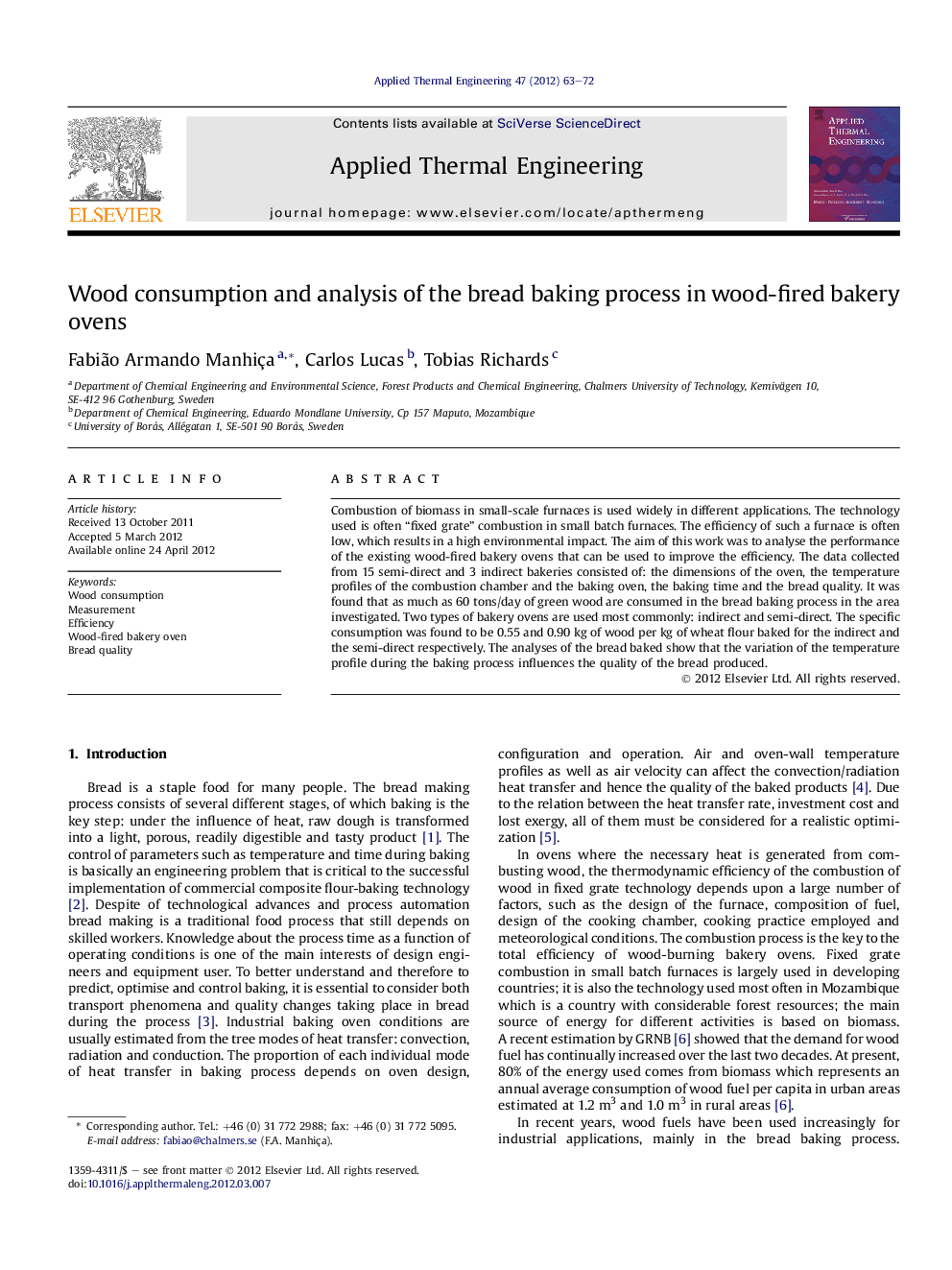| Article ID | Journal | Published Year | Pages | File Type |
|---|---|---|---|---|
| 647020 | Applied Thermal Engineering | 2012 | 10 Pages |
Combustion of biomass in small-scale furnaces is used widely in different applications. The technology used is often “fixed grate” combustion in small batch furnaces. The efficiency of such a furnace is often low, which results in a high environmental impact. The aim of this work was to analyse the performance of the existing wood-fired bakery ovens that can be used to improve the efficiency. The data collected from 15 semi-direct and 3 indirect bakeries consisted of: the dimensions of the oven, the temperature profiles of the combustion chamber and the baking oven, the baking time and the bread quality. It was found that as much as 60 tons/day of green wood are consumed in the bread baking process in the area investigated. Two types of bakery ovens are used most commonly: indirect and semi-direct. The specific consumption was found to be 0.55 and 0.90 kg of wood per kg of wheat flour baked for the indirect and the semi-direct respectively. The analyses of the bread baked show that the variation of the temperature profile during the baking process influences the quality of the bread produced.
► Two main bakeries oven types are most common: indirect and semi-direct. ► The semi-direct wood-fired bakery oven show greatest inefficiency. ► Non-uniform temperature distribution in baking chamber affects bread quality. ► Heat flux perturbation occur when the feeding door is opened.
